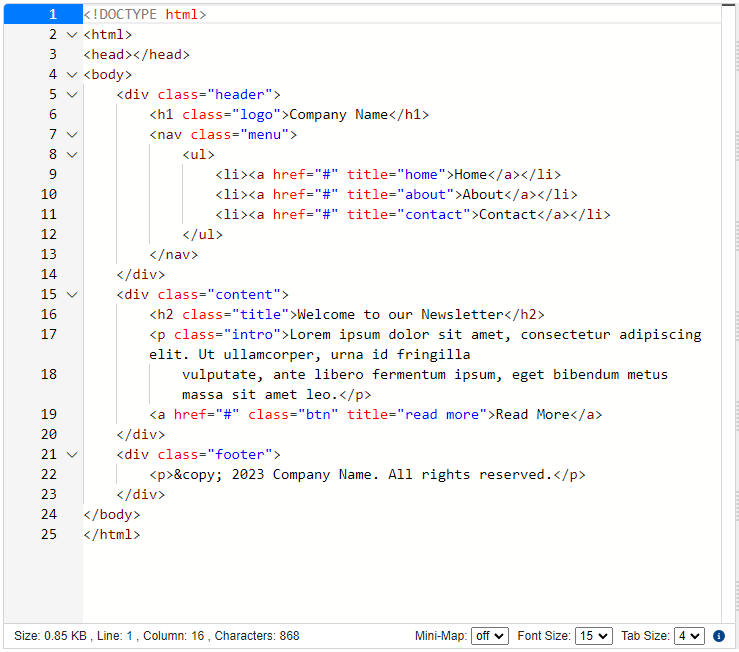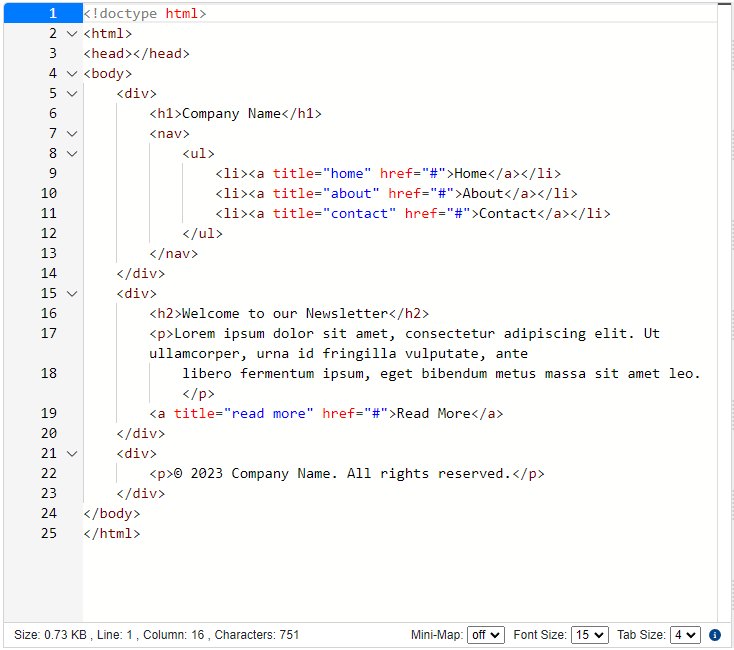What are the benefits of Classes and ID Removal ?
In HTML email design, classes and IDs are often used to apply styling and formatting to specific elements of an email, such as text or images. Removing classes and IDs from email templates can improve email deliverability.- Removing classes and IDs can help streamline the HTML code in email templates, making them more lightweight and less cluttered. This can improve loading times and reduce the overall size of the email, which can be particularly important for users who access their email on mobile devices with limited data plans or slow connections. By reducing the file size and improving loading times, emails are more likely to be opened and read by recipients, which can lead to better engagement and ultimately, better results for email marketers.
- There is actually no need for them, once you inline your CSS.
Example of With and Without Classes
With Classes

Without Classes

h tags to p tags to ensure a consistant display across email clients.
Video Overview of Classes an ID Removal
Classes and ID Removal Use Case
An online marketing firm observed that their email campaigns were not resonating well with their audience, leading to disappointing engagement levels. After conducting some research, they discovered that one of the reasons for their poor deliverability was the excessive use of classes and IDs in their email templates.The problem with using so many classes and IDs in emails is that it increased the size of the email that it caused clipping. Portions of the email is not shown to the users because of clipping. To address this issue, Company XYZ decided to use a tool like Campaign Cleaner to remove all unnecessary classes and IDs from their email templates.By removing these unnecessary classes and IDs, and reducing the size of their email, the company was able to improve their email engagement rates, with more subscribers interacting with their emails.

